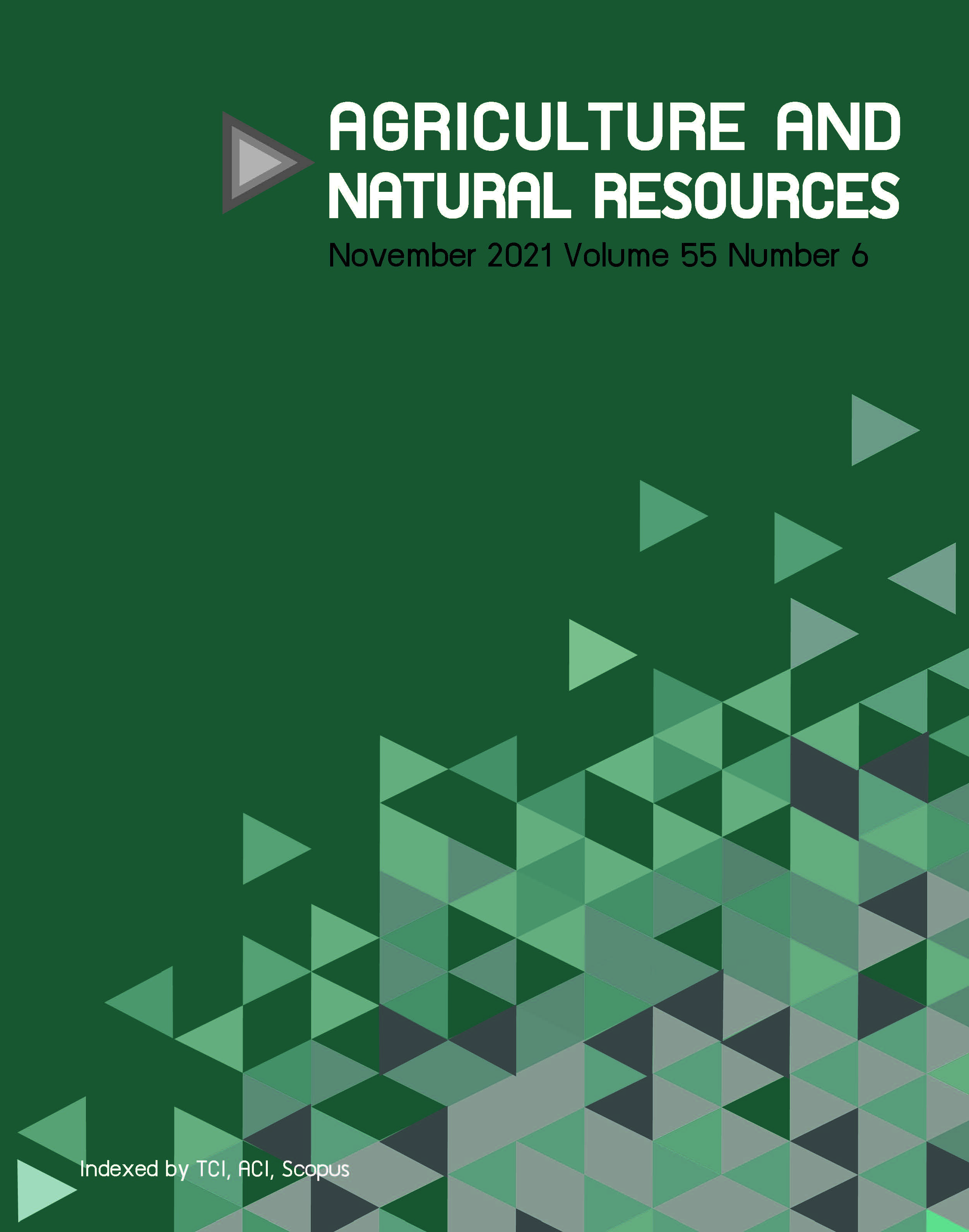Quantitative changes of phenolics, flavonoids, β-glucans and antioxidant activities during the first and second harvests of split-gill mushroom (Schizophyllum commune)
Keywords:
Antioxidant activity, Bioactive compound, Maturity stage, Mushroom harvest, Split-gill mushroomAbstract
The split-gill mushroom (Schizophyllum commune) in each maturity stage and harvesting time differs in its phenolic, flavonoid, β-glucan production and biological antioxidant activities. This study determined the quantitative changes of the bioactive compounds and antioxidant activities in the first and second harvests of the split-gill mushroom. Fresh mushroom samples were separately harvested into three groups for two successive growing cycles: 1) immature fruiting body (IF); 2) mature fruiting body with immature spores (MFIS); and 3) mature fruiting body with mature spores (MFMS). The results indicated that the fully mature mushroom with spores of each growth cycle had the significantly highest amounts of phenolic compounds, flavonoids and β-1,3- and β-1,3-1,6-glucans. The bioactive compounds of the mushroom increased along with its growth, regardless of the cycle. The highest 2,2-diphenyl-1-picrylhydrazyl radical and 2,2-azino-bis-3-ethylbenzothiazoline-6-sulfonic acid radical cation scavenging activities and ferric reducing antioxidant power in the first cycle (0.69±0.02, 2.59±0.13, 1.86±0.17 mg/mL, respectively) and the second cycle (0.67±0.08, 2.18±0.36, 1.15±0.07 mg/mL, respectively) were observed in fully grown mushrooms and strongly corresponded to their phenolics and flavonoids contents. Notably, the bioactive compounds and antioxidant activities of second-harvest mushrooms were higher than for the first batch. The results of the study should provide useful information for extracting bioactive compounds derived from split-gill mushroom to use in future products in the food and pharmaceutical industries.
Downloads
Published
How to Cite
Issue
Section
License
Copyright (c) 2021 Kasetsart Universityonline 2452-316X print 2468-1458/Copyright © 2022. This is an open access article under the CC BY-NC-ND license (http://creativecommons.org/licenses/by-nc-nd/4.0/),
production and hosting by Kasetsart University of Research and Development Institute on behalf of Kasetsart University.







